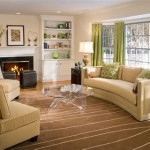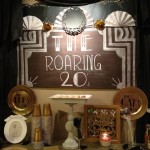Embracing Timeless Elegance: A Guide to Vintage Style House Decor
Vintage style house décor evokes a sense of nostalgia, charm, and sophistication. It offers a departure from contemporary trends, embracing the aesthetic principles and design elements of past eras. This approach to interior design is not merely about replicating a specific historical period; rather, it involves curating a collection of pieces and design choices that reflect a particular vintage sensibility. The appeal lies in the unique character, craftsmanship, and enduring style associated with earlier decades.
The successful integration of vintage elements into a modern home requires careful consideration and a thoughtful approach. It involves understanding the defining characteristics of different vintage styles, sourcing authentic pieces, and balancing them with contemporary elements to create a cohesive and harmonious living space. A well-executed vintage-inspired home is not a museum; it is a comfortable and functional space that reflects the homeowner's personal style and appreciation for the past.
Identifying Key Vintage Styles
Understanding the nuances of different vintage styles is crucial for achieving a desired aesthetic. Several distinct eras and design movements contribute to the broader category of “vintage,” each with its unique characteristics and defining features. These styles can be blended to create a more eclectic and personalized space, but a foundational understanding of each helps to ensure a cohesive final result.
Mid-Century Modern (1940s-1960s): This style is characterized by clean lines, organic shapes, and a focus on functionality. Furniture often features tapered legs, geometric patterns, and the use of materials like wood, metal, and glass. Color palettes typically incorporate muted earth tones, pops of vibrant accent colors like orange, avocado green, and mustard yellow, and the incorporation of natural textures. Iconic pieces include Eames chairs, tulip tables, and sleek credenzas. The emphasis is on simplicity, functionality, and a connection to nature.
Art Deco (1920s-1930s): Art Deco is defined by its opulence, geometric patterns, and luxurious materials. Think bold geometric shapes, stylized ornamentation, and the use of materials like chrome, glass, and exotic woods. Color palettes are often rich and dramatic, featuring gold, black, emerald green, and deep reds. Consider mirrored furniture, geometric patterned rugs, and statement lighting fixtures. Art Deco embodies glamour and sophistication, reflecting the optimism and energy of the Roaring Twenties.
Bohemian (Various periods, but often tied to the 1960s-1970s): Bohemian style embraces eclecticism, individuality, and a relaxed, free-spirited aesthetic. It is characterized by a mix of patterns, textures, and colors, often drawing inspiration from global cultures. Think layered textiles, vintage rugs, macramé wall hangings, and plants. Furniture often includes comfortable seating, vintage finds, and repurposed items. Bohemian décor encourages personal expression and a rejection of conventional design rules.
Shabby Chic (1980s-present, drawing on earlier styles): Shabby Chic emphasizes distressed finishes, soft colors, and a romantic, feminine aesthetic. It often incorporates vintage furniture with worn paint, floral patterns, and lace details. Color palettes are typically light and airy, featuring pastel shades, creams, and whites. Think antique mirrors, floral-patterned fabrics, and vintage chandeliers. Shabby Chic creates a comfortable and inviting atmosphere with a touch of faded elegance.
Sourcing Authentic Vintage Pieces
Acquiring authentic vintage pieces is a crucial aspect of creating a genuine vintage-inspired home. While reproduction furniture and décor items can mimic the look of vintage, nothing quite compares to the character and history of original pieces. There are several avenues for sourcing authentic vintage items, each with its own advantages and considerations.
Antique Stores and Flea Markets: These venues offer a wide selection of furniture, décor items, and collectibles from various eras. While browsing, look for unique pieces with interesting details, character, and signs of age. Inspect items carefully for damage or repairs and be prepared to negotiate prices. Building a rapport with antique store owners can lead to valuable insights and hidden gems.
Estate Sales and Auctions: Estate sales offer the opportunity to purchase entire collections of vintage furniture and décor items at competitive prices. Auctions can also be a good source of unique and valuable pieces, but they require careful research and bidding strategies. Previewing items before bidding or attending an estate sale is essential. Be aware of potential renovation costs and transportation logistics.
Online Marketplaces: Online platforms like eBay, Etsy, and Facebook Marketplace offer a vast selection of vintage items from sellers around the world. Exercise caution when buying online, always checking seller reviews and carefully examining photos and descriptions. Consider the shipping costs and return policies before making a purchase. When possible, obtain additional photos or ask questions to clarify the condition of the item.
Repurposing and Upcycling: Transforming existing furniture or décor items into vintage-inspired pieces is a sustainable and creative way to add character to a home. Consider refinishing old furniture with vintage-inspired paint colors or adding new hardware to update its look. Repurposing items like old suitcases into side tables or vintage crates into shelving units can add unique and personal touches.
Balancing Vintage with Contemporary Elements
Creating a successful vintage-inspired home involves striking a balance between vintage and contemporary elements. A room filled entirely with vintage pieces can feel overwhelming or dated, while a room with no vintage touches might lack character and warmth. The key is to integrate vintage pieces thoughtfully, using them to complement and enhance the overall design.
Start with a Neutral Base: Begin by creating a neutral and modern base for the room, using contemporary furniture, paint colors, and flooring. This provides a blank canvas for incorporating vintage pieces without overwhelming the space. Opt for clean lines, simple shapes, and neutral colors to create a sense of balance and sophistication. For example, a modern sofa in a neutral color can be paired with vintage accent chairs and a vintage coffee table.
Incorporate Vintage Accents: Introduce vintage elements through accent pieces like artwork, mirrors, lighting fixtures, and accessories. These smaller items can add character and charm to a room without overpowering the overall design. Consider hanging vintage artwork on a modern wall or using vintage lamps to illuminate a contemporary space. Accent pieces are an effective way to introduce vintage style without a major overhaul.
Mix and Match Textures and Patterns: Combine vintage and contemporary textures and patterns to create visual interest and depth. For example, pair a vintage velvet armchair with a modern geometric-patterned rug or combine vintage lace curtains with contemporary sheer drapes. Mixing different textures and patterns adds dimension without feeling contrived. A considered approach to mixing fabrics and prints is key to this technique.
Consider Scale and Proportion: When incorporating vintage furniture, it’s important to consider its scale and proportion in relation to the other elements in the room. Small vintage pieces can get lost in a large contemporary space, while large vintage pieces can overwhelm a small room. Ensure that the scale of the furniture is appropriate for the size of the room. Using software or simply sketching the layout can aid in determining the correct proportions.
Ultimately, the successful integration of vintage style into a home is about creating a space that is both aesthetically pleasing and functional. It's about celebrating the beauty and craftsmanship of the past while embracing the comforts and conveniences of the present. The end result should be a unique and personal space that reflects the homeowner’s individual style and appreciation for timeless design.

21 Antique Vintage Home Decor Ideas Extra Space Storage

A Cozy Fall Farmhouse Family Room Cottage Style Home Decor Inspiration With Pumpkins Co Farm House Living Rooms

Vintage Decor 20 Retro Designs To Revisit Bob Vila

How To Decorate With Antiques And Vintage Pieces

What We Can Learn From This Icelandic Vintage Style Decor Inspirations Essential Home

Vintage Modern A Home Decor Style That Every N Must Explore The Keybunch Blog Interior

60 Best Farmhouse Style Ideas Rustic Home Decor

Reviving The Charm Of Old London Incorporating Historical Elements In Vintage Frog

Decor Guide Lift Up Your Home Style Using A Touch Of Vintage Flair

50 The Best Vintage Home Decoration Ideas Sweetyhomee Rooms Decor Trends House Interior







